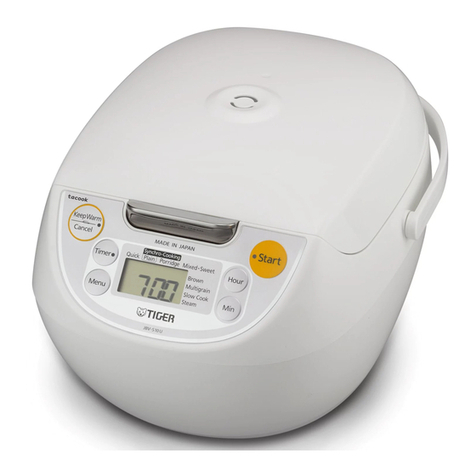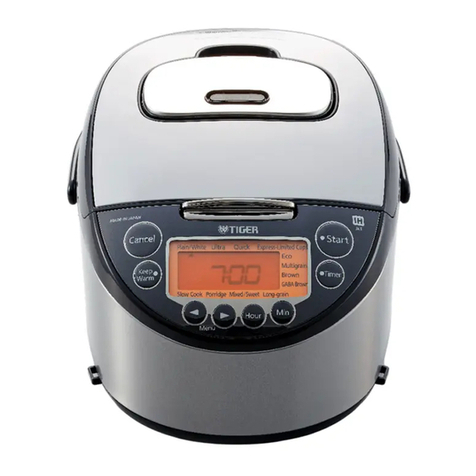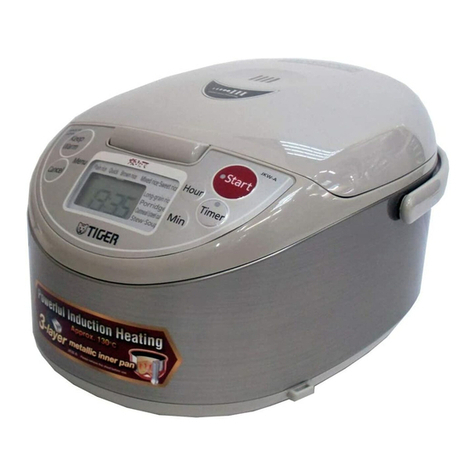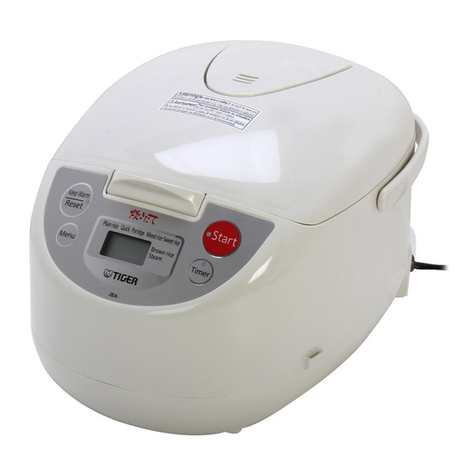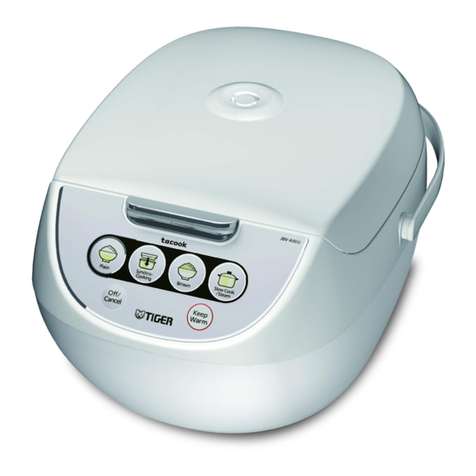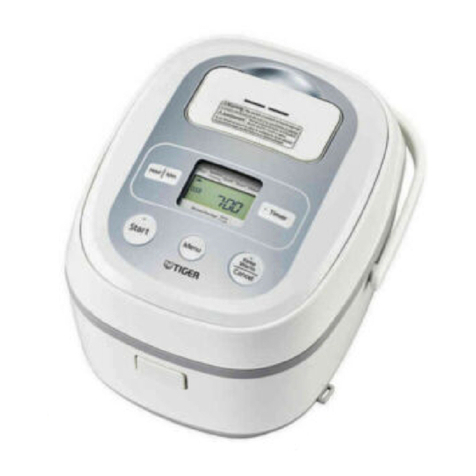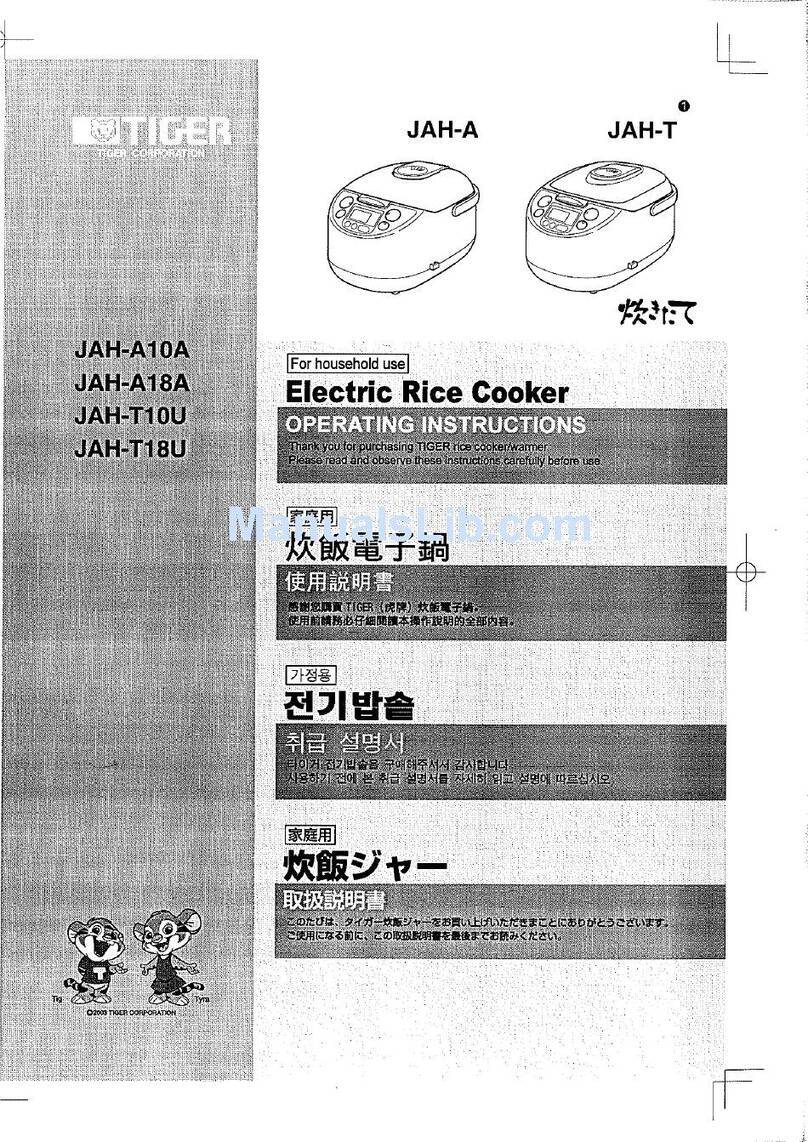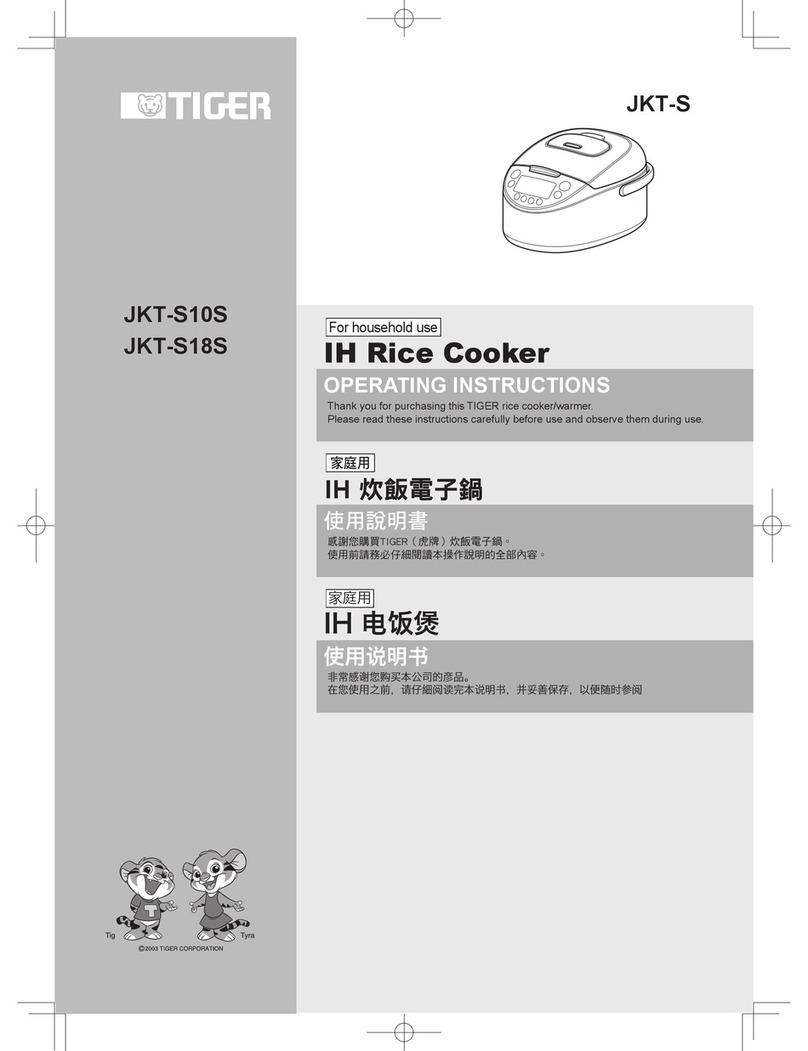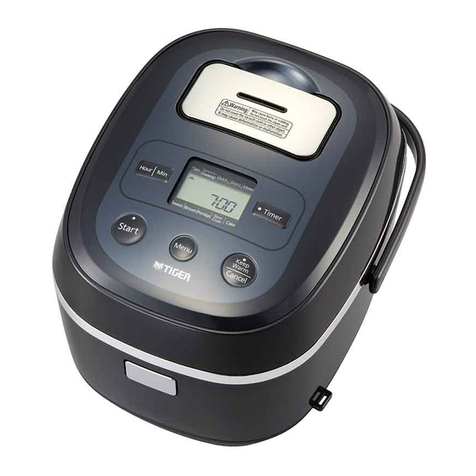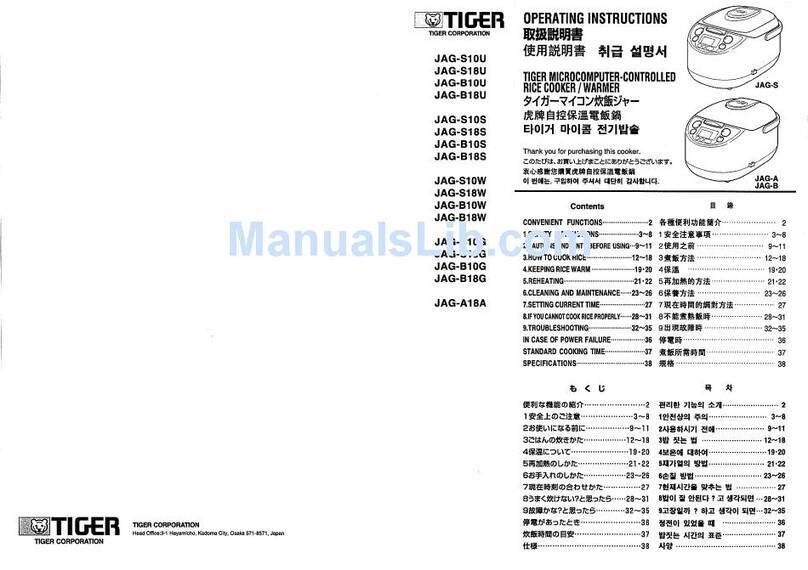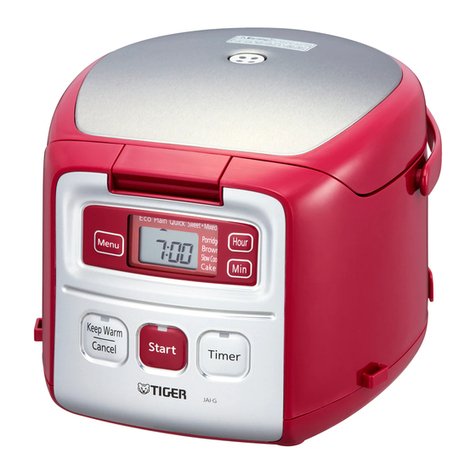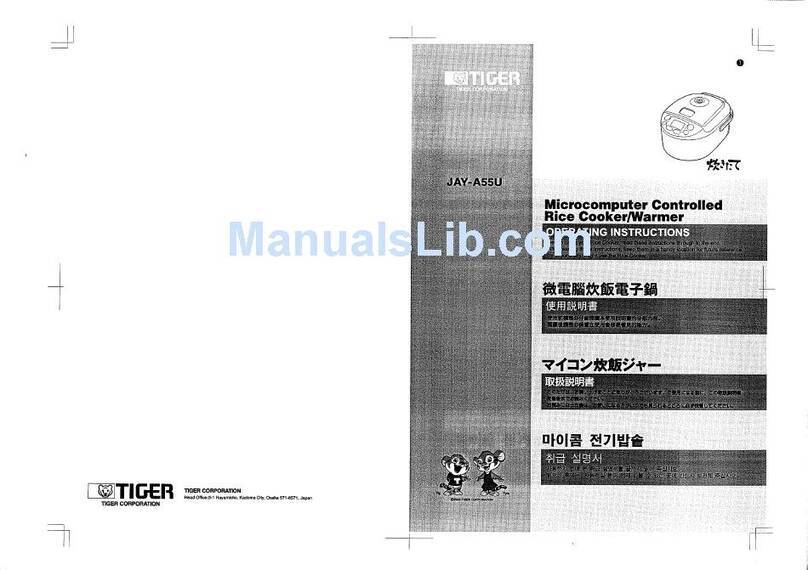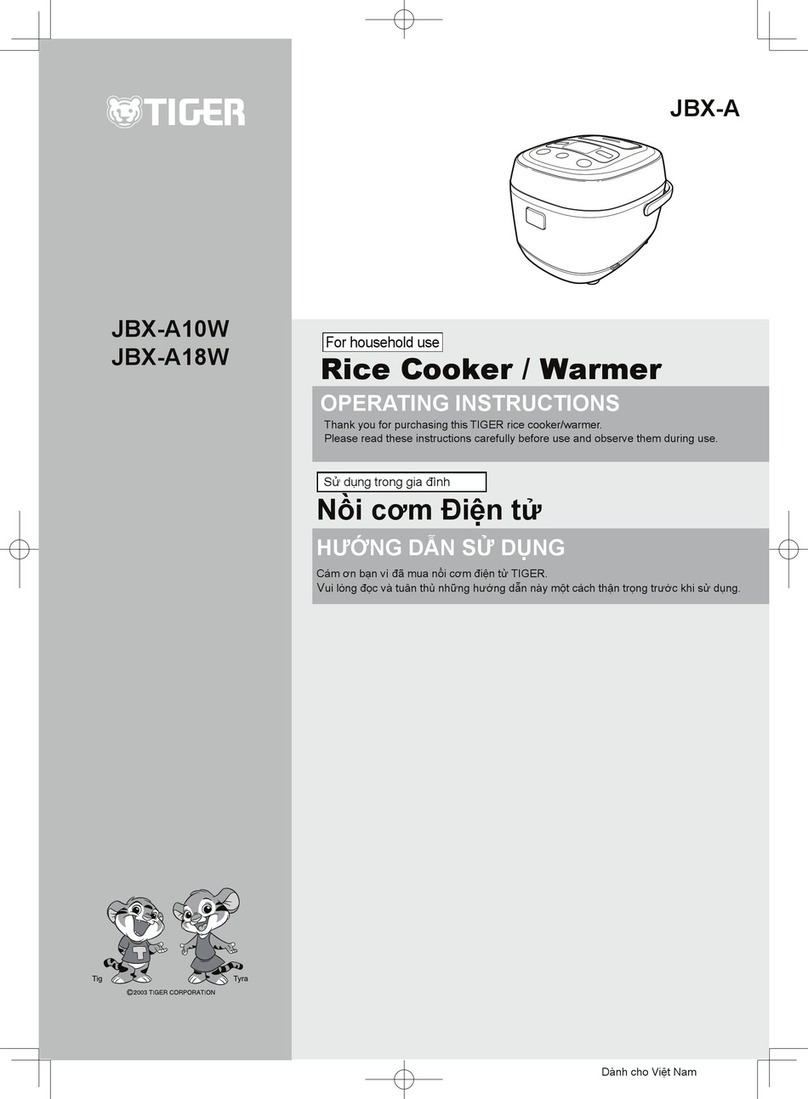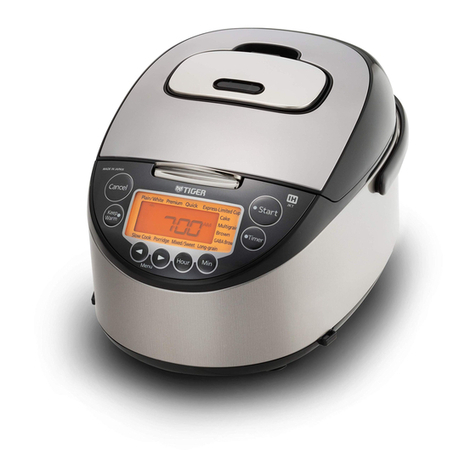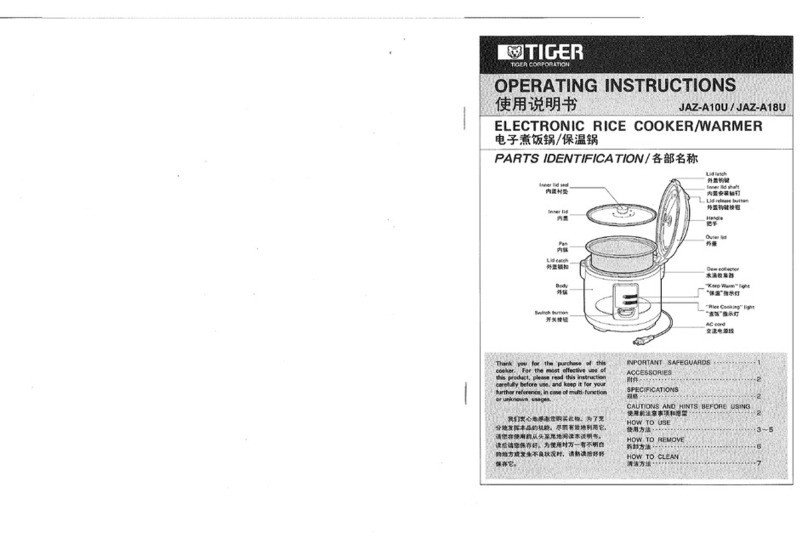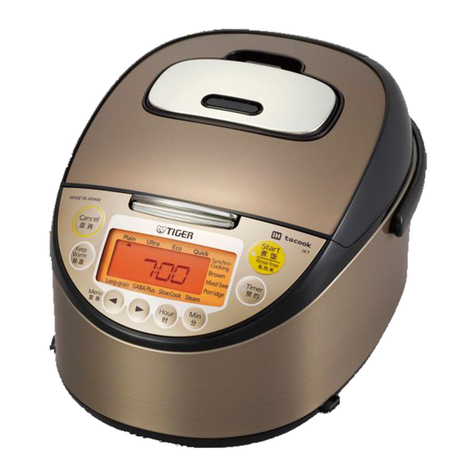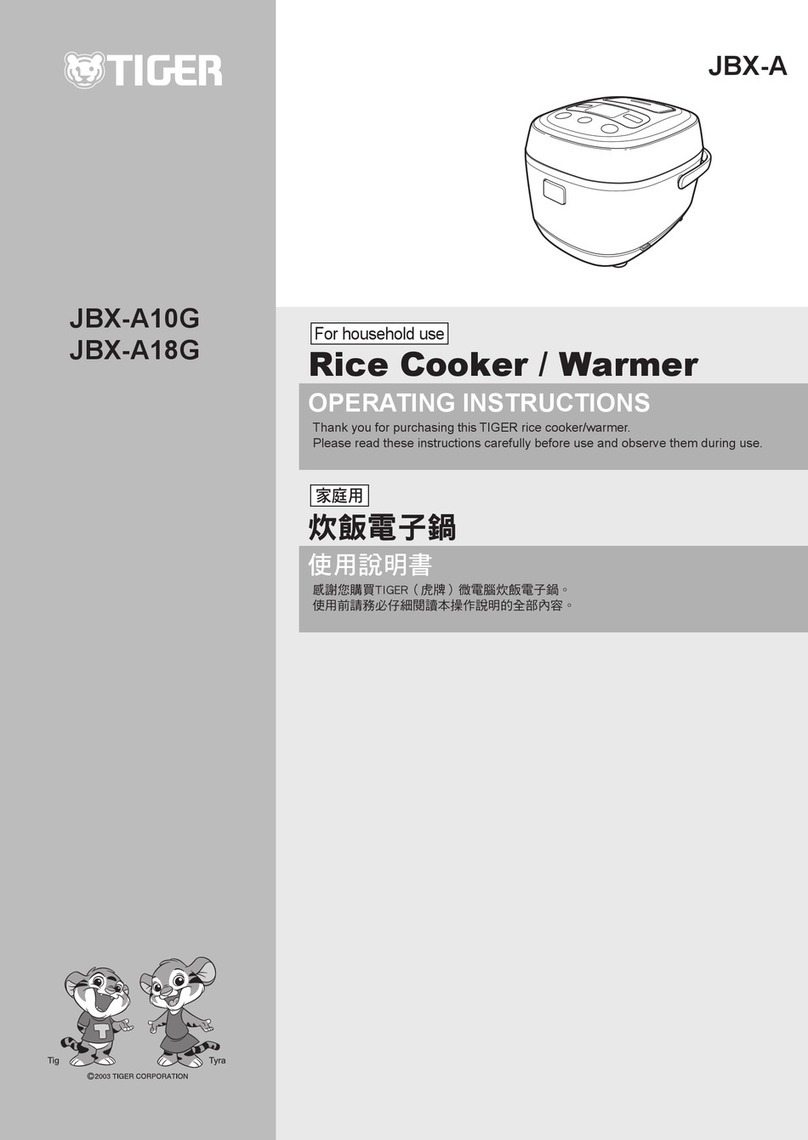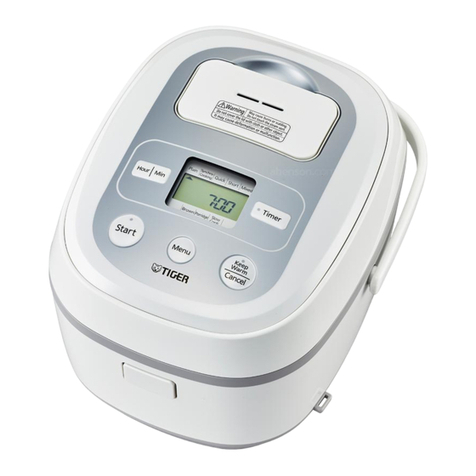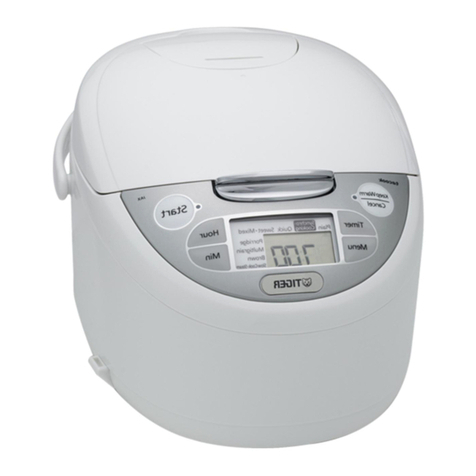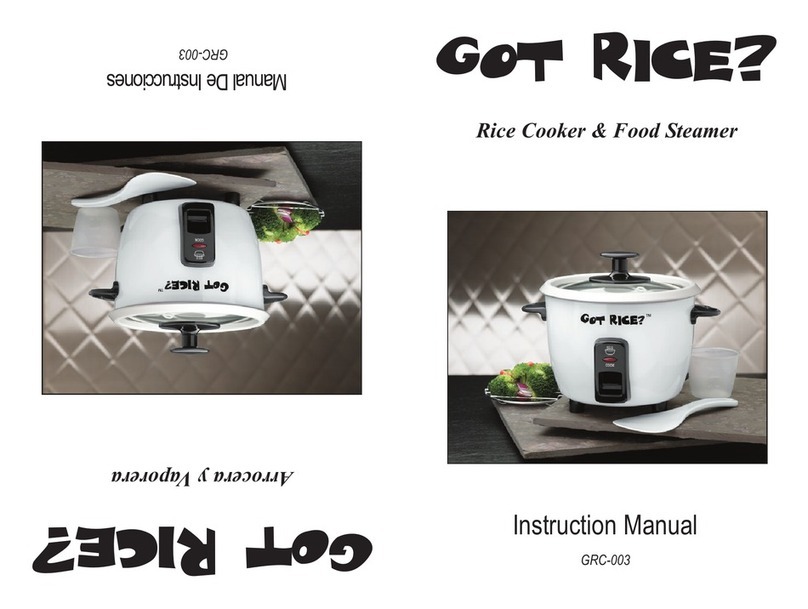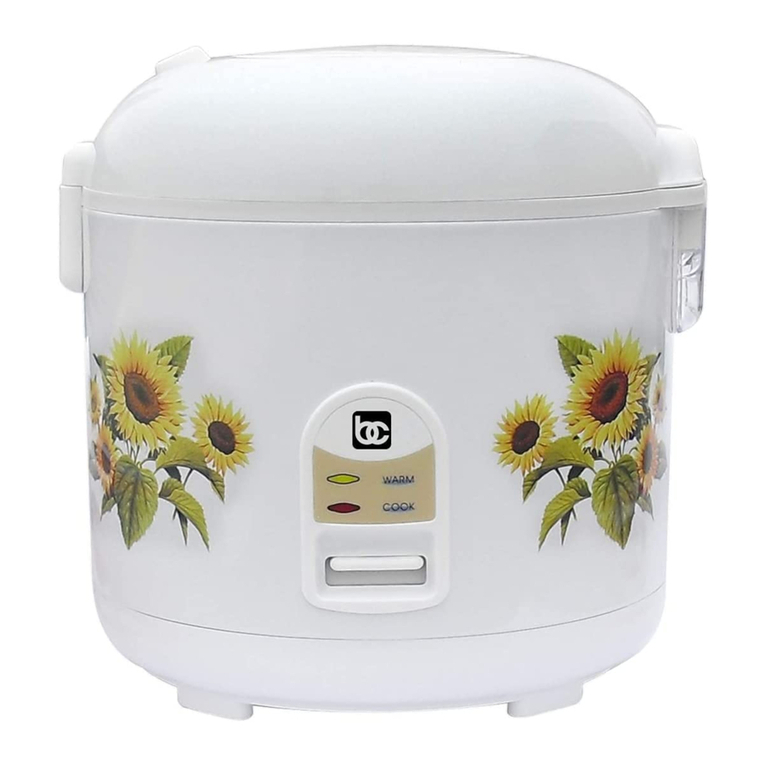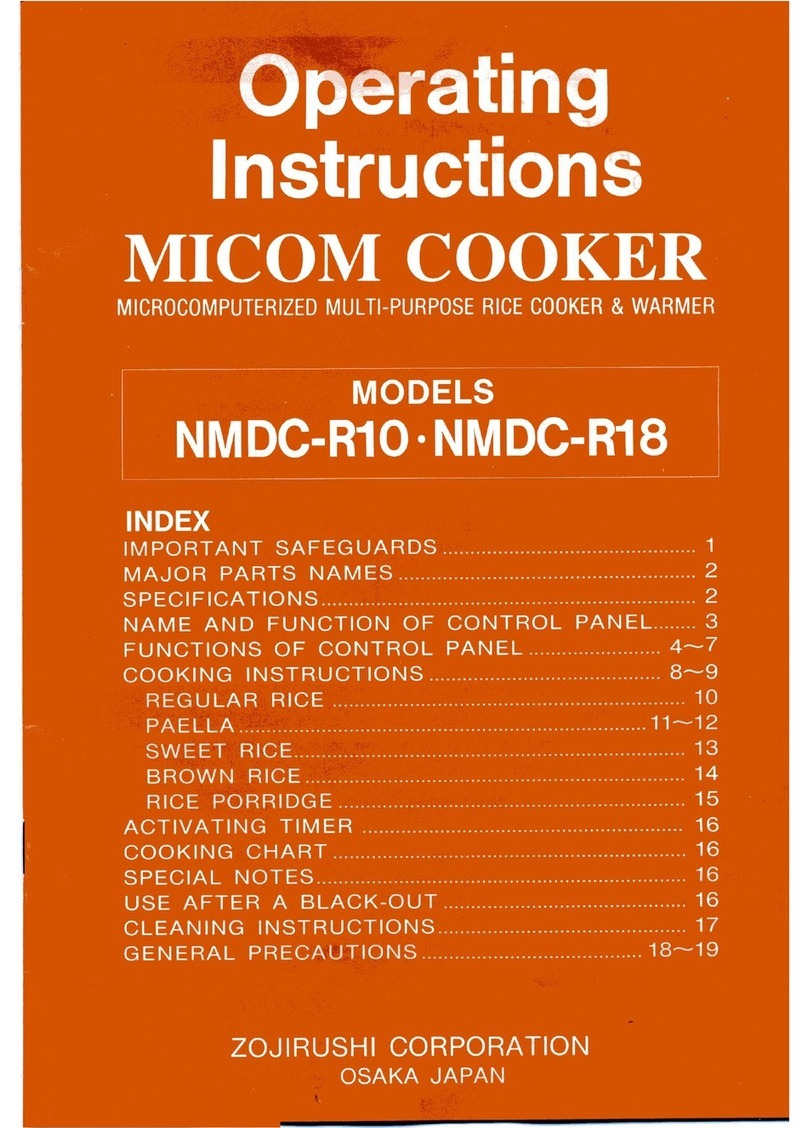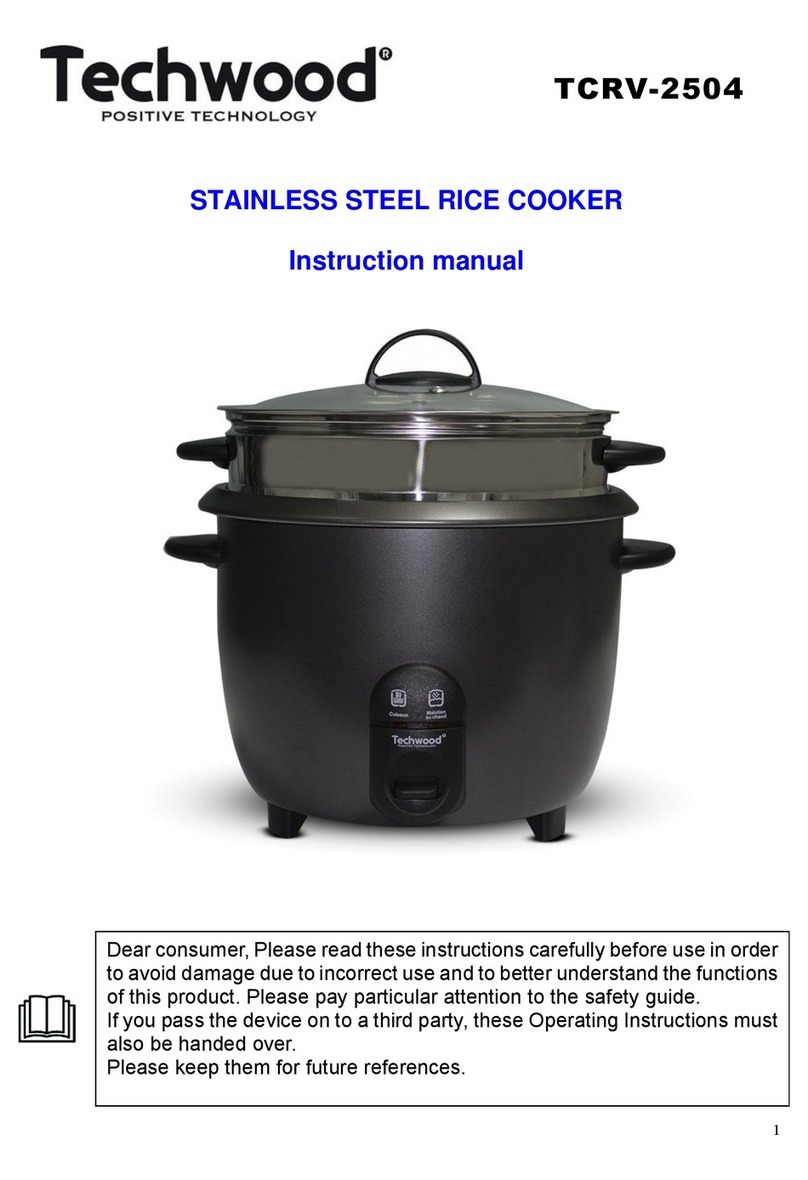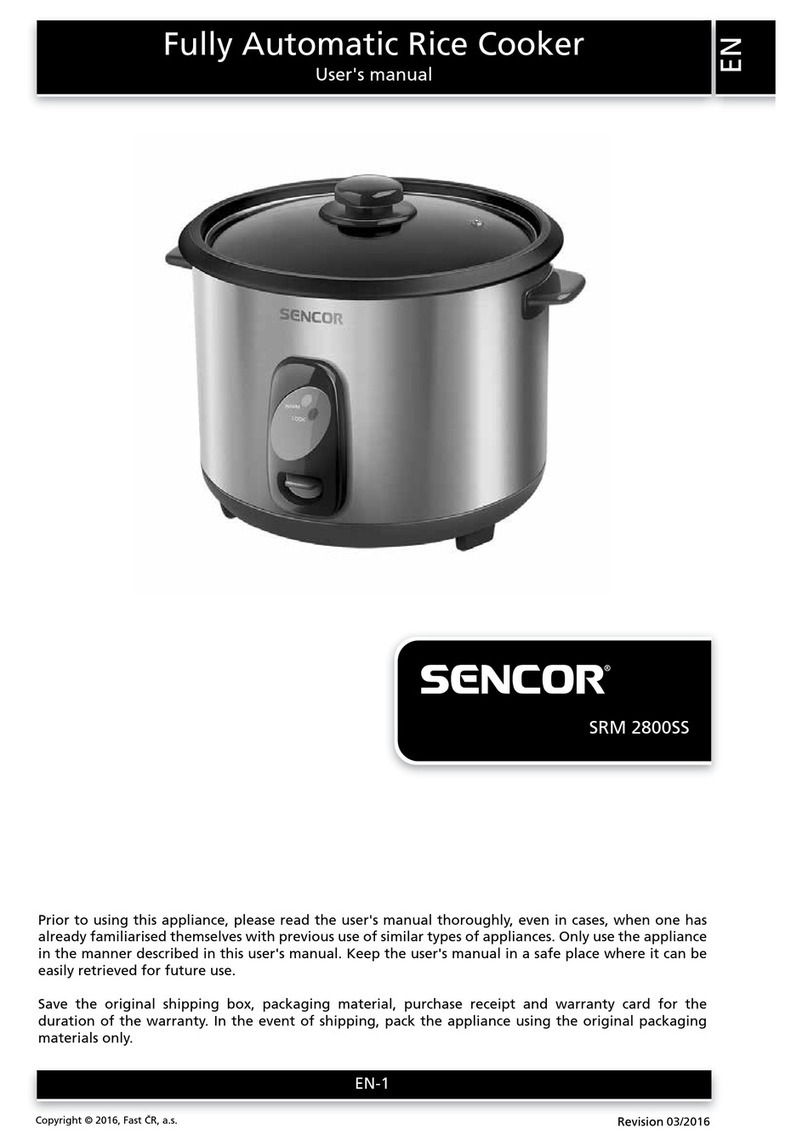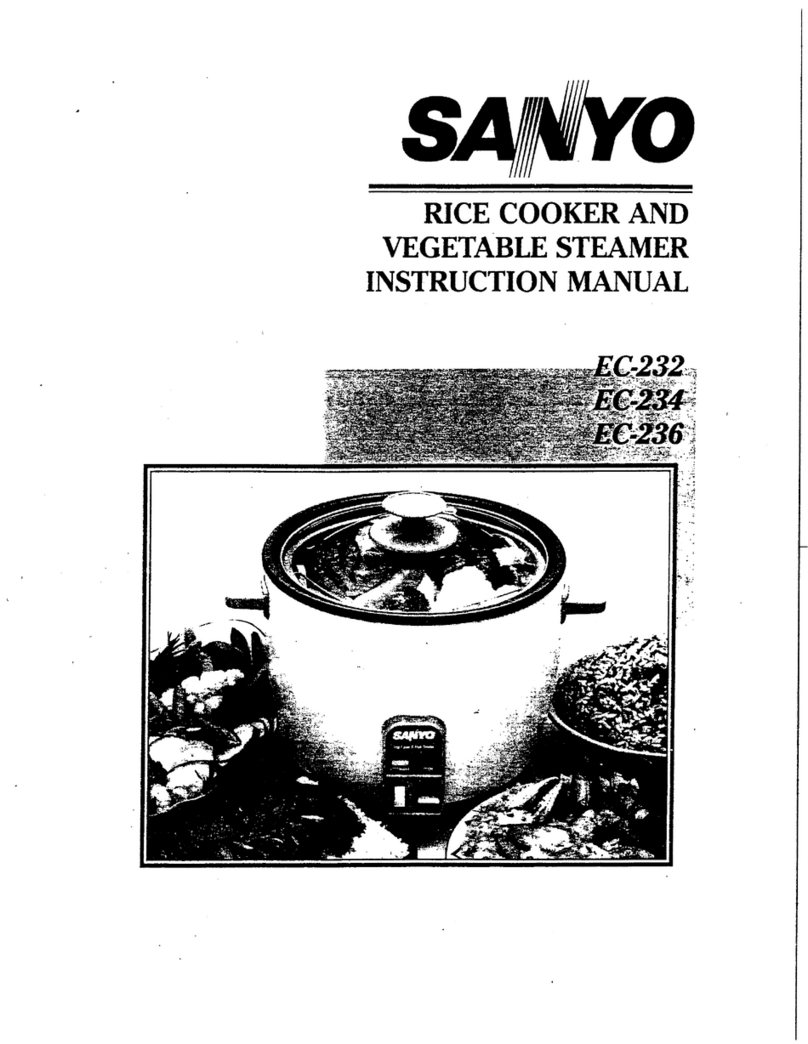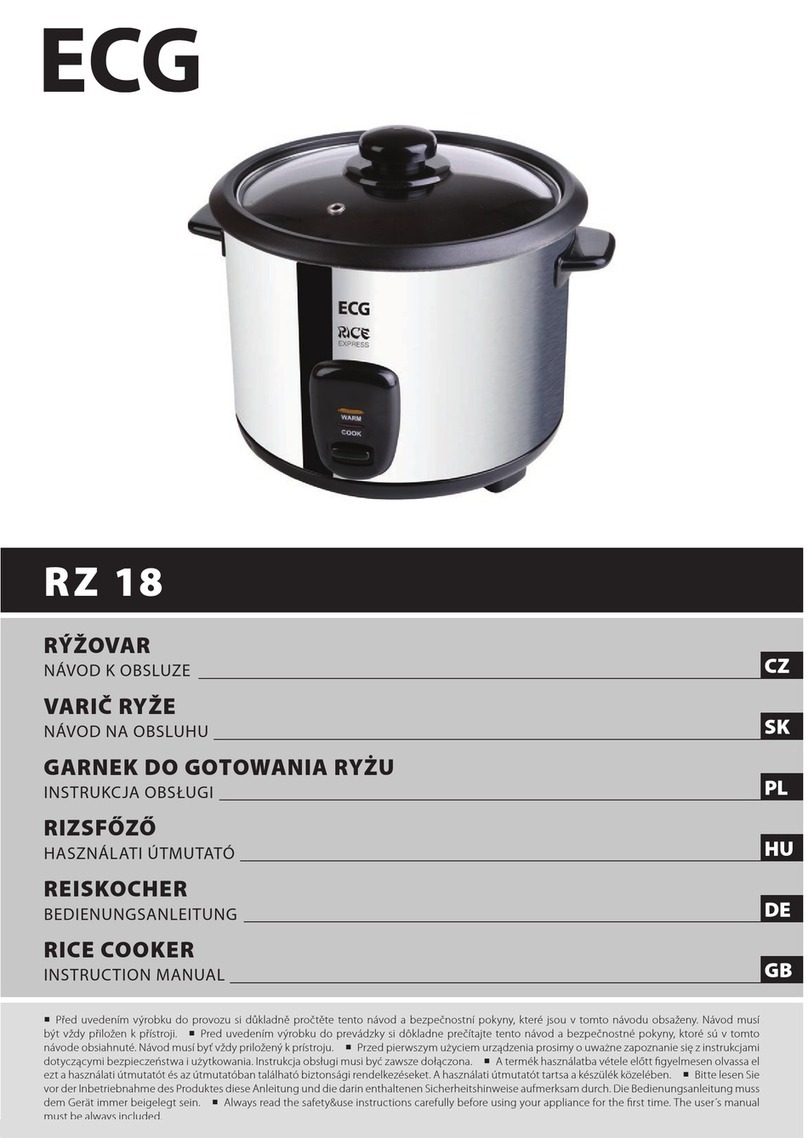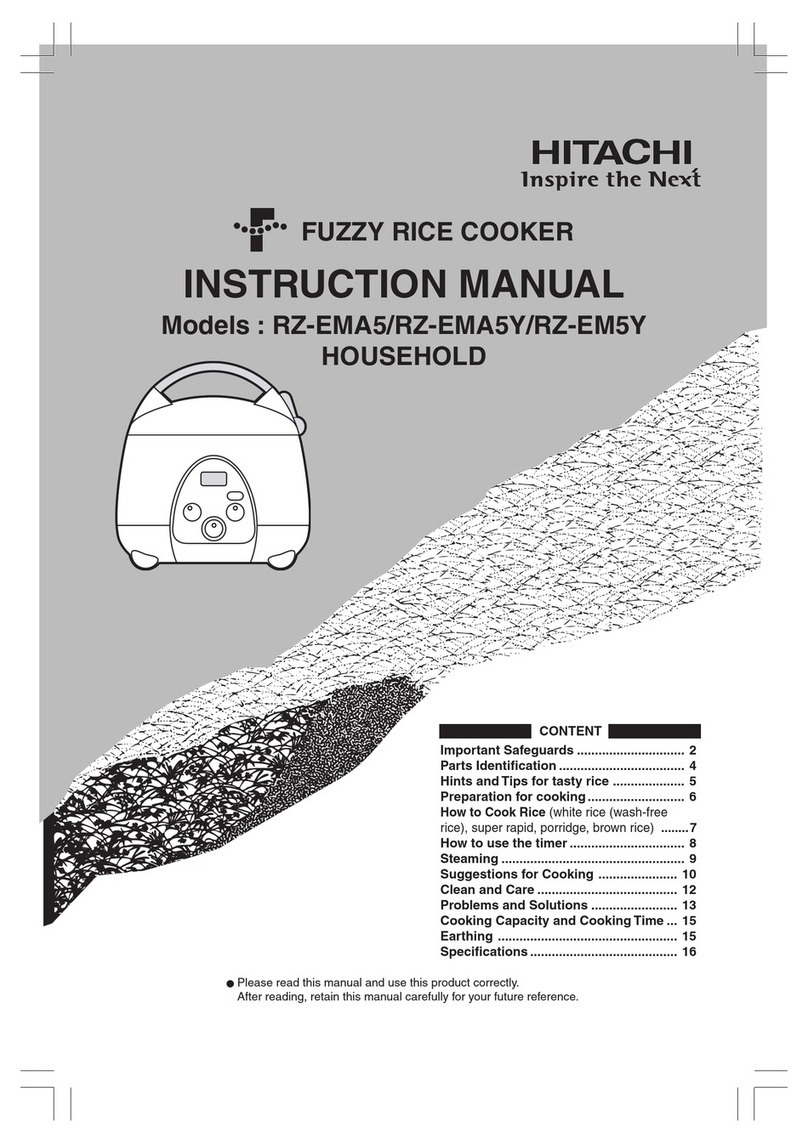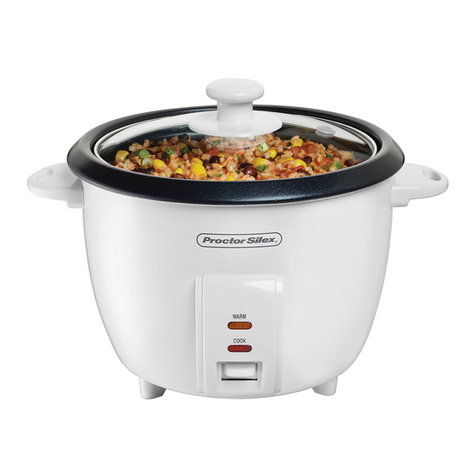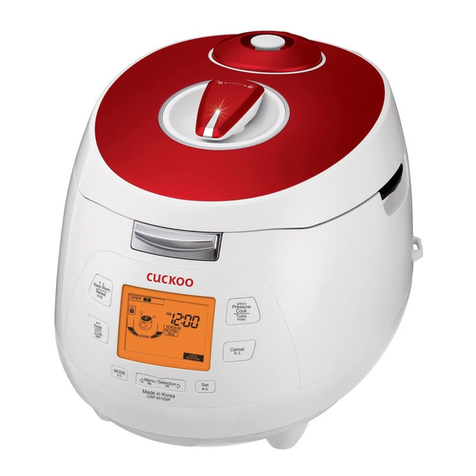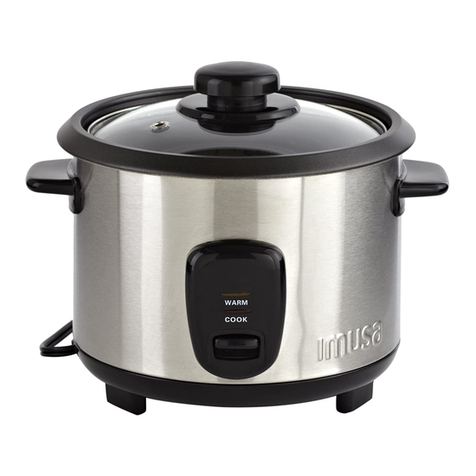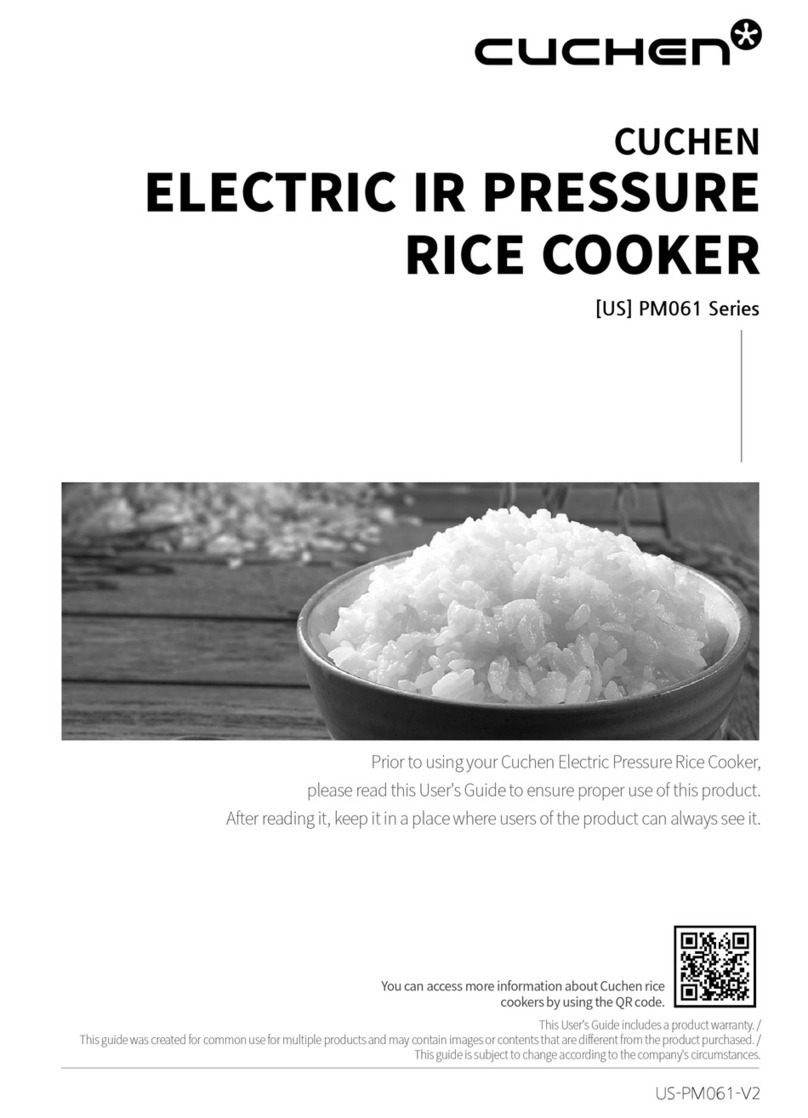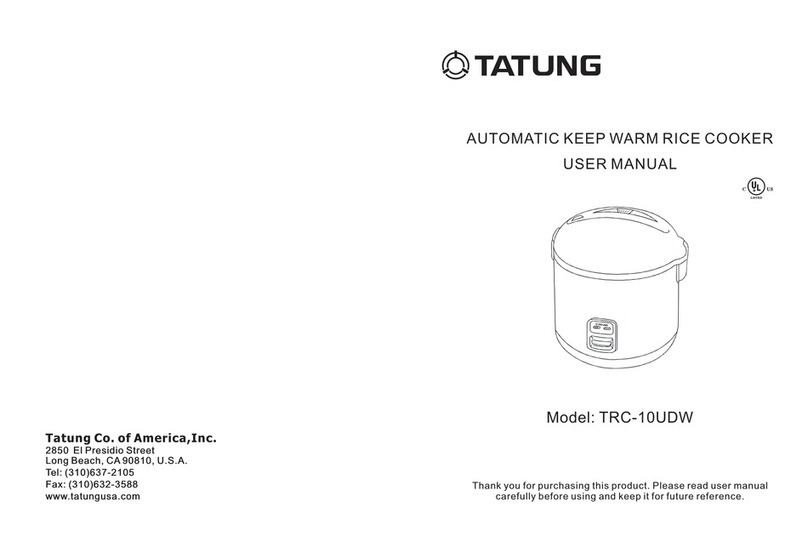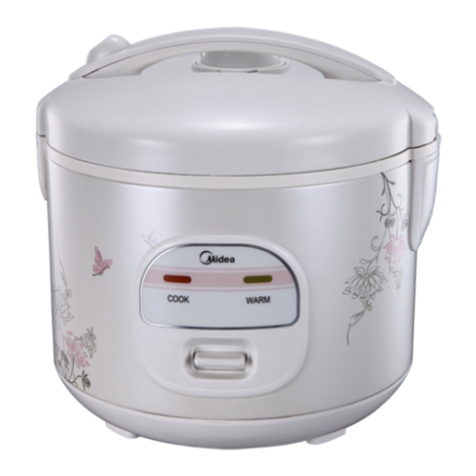Do not place your face or hands near
the steam cap or steam vent.
Doing so may result in burns. Be
especially careful to keep out of reach of
infants and children.
Warning
Caution
General safety precautions
Handle the rice cooker with care.
Dropping the rice cooker or exposing it
to a strong impact may result in injury or
malfunction of the unit itself.
Household use only.
This appliance is intended to be used
in household and similar applications
such as:
• staffkitchenareasinshops,ofces
and other working environments;
• farm houses;
• by clients in hotels, motels and other
residential type environments;
• bed and breakfast type environments.
Environment for use
Do not use on an unstable surface, or
on a table or rug that is vulnerable to
heat.
Doingsomayresultinreordamageto
the table or mat.
Do not use near the wall or furniture.
Steam and heat may cause damage,
discoloration and/or deformation. Use
the rice cooker at least 30cm away from
walls or furniture.
Do not use the rice cooker near a heat
source or where it may be splashed
with water.
Doing so may result in electric shock,
short-circuiting,re,ordeformationor
malfunction of the rice cooker.
Do not use the rice cooker on an IH
cooking heater.
Doing so may result in malfunction.
Power cord and plug
Be sure to rmly hold the plug when
removing from an outlet; this is to
avoid electric shock, shorting, or re.
Do not use multiple outlet
receptacles; this is to avoid re.
Handling the rice cooker
Use only the inner pot made
exclusively for this rice cooker.
Using any other pot may result in
overheating or malfunction.
Do not cook with the inner pot empty.
Doing so may result in overheating or
malfunction.
Following these safety instructions
will allow the appliance to be used
for many years.
●Remove any burnt rice or remaining grains of rice.
Failure to do so may cause steam to leak or contents to
boil over. This may result in malfunction or improperly
cooked rice.
●Do not cover the rice cooker with a cloth or other
object during cooking.
Doing so may cause the rice cooker or the lid to
become deformed or discolored.
●The holes on the rice cooker are designed to
maintain its functions and performance. In
extremely rare cases, dust or even insects
may enter these holes and cause malfunction.
To prevent this, a commercially available insect
prevention sheet, etc., is recommended. If a
malfunction does occur due to this problem, it will
not be covered by warranty. Contact the place of
purchase.
● Theinnerpot'suorocarbonresincoatingmay
wear and peel with extended use. This material is
harmless to humans and this situation presents no
hindrance to actual cooking or to the rice cooker’s
heat insulating capability.
In the case you would like to purchase a new
inner pot, you can do so by contacting the place of
purchase.
●Strictly observe the following instructions
tokeeptheuorocarbonresincoatingfrom
scratching or peeling.
• Do not place the inner pot directly over gas,
electric, or IH stove top. Do not place in the
microwave or oven.
• Use the Keep Warm function for white rice
only. Do not use for mixed or seasoned rice,
etc.
• Do not use vinegar inside the inner pot.
• Use only the supplied spatula or a wooden
spatula.
• Do not use hard utensils such as metal
ladles, spoons, or whisks.
• Do not place a basket inside the inner pot.
• Do not place tableware and other hard
utensils or objects inside the inner pot.
• Do not clean the inner pot with hard materials
such as metal spatulas or nylon scouring
sponges.
• Do not use a dishwasher/dryer to clean the
inner pot.
• Wash the rice in a separate bowl. Using
the inner pot for washing rice may damage
theuorocarbonresincoatingordeform
the bottom side of the inner pot, resulting in
improperly cooked rice.
• If the inner pot becomes deformed, contact
the place of purchase.
